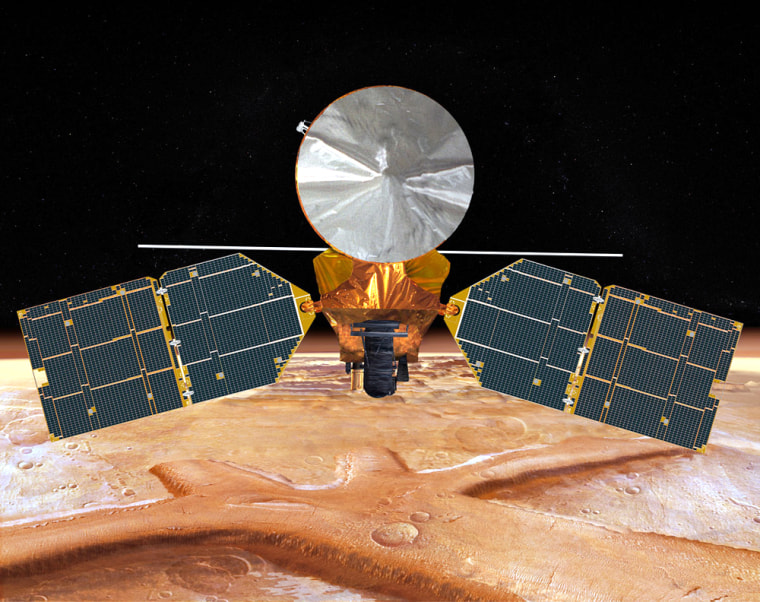The most powerful spacecraft ever sent to Mars has settled into a nearly circular orbit, a move that allows scientists to begin studying the planet in unprecedented detail, NASA said Tuesday.
The Mars Reconnaissance Orbiter fired its thrusters for 12 minutes Monday to adjust to its final position six months after it arrived at the planet. Its altitude ranges between 155 to 196 miles above the surface.
"Getting to this point is a great achievement," said Dan Johnston, deputy mission manager at the space agency's Jet Propulsion Laboratory, which manages the $720 million mission.
Over the next several months, the orbiter will deploy its 33-foot antenna and remove a lens cap from one of its instruments. It will begin collecting data in November.
The unmanned orbiter safely slipped into orbit around Mars in March after a seven-month, 310 million-mile journey. It joined three other spacecraft currently flying around the planet and two rovers rolling across the surface.
Several weeks after entering orbit, a high-resolution camera aboard the spacecraft beamed back a test image showing the planet's southern highlands and cratered surface.
The orbiter spent the last half year repeatedly dipping in to the upper atmosphere to shrink its orbit in a tricky process known as aerobraking.
